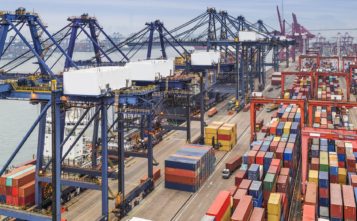The global production and trade of major wood products such as industrial roundwood, sawnwood and wood-based panels have surged to their highest level since the Food and Agriculture Organization began recording forest statistics in 1947.
According to the latest data released by FAO, record volumes of wood-based products were produced and traded around the world in 2018. The value of international trade was 11 percent higher than in 2017.
"The increased production of renewable forest products provides an opportunity to replace fossil-based products that have a higher carbon footprint, thereby contributing to the Sustainable Development Goals," said Sven Walter, senior forestry officer who heads FAO's forest products and statistics team.
The fastest growth was seen in North America, Europe and the Asian-Pacific region, largely driven by positive economic growth.
Sawnwood production grew by 2 percent around the world in 2018 and the output of both sawnwood and panels reached a record high. Global production and trade in wood pulp also grew by 2 percent to reach new levels in 2018 - 188 million tonnes and 66 million tonnes respectively.
China has grown in importance as both a producer and consumer of forest products and has recently overtaken the US in sawnwood production. The country is by far the largest producer and consumer of wood-based panels and paper.
In 2018, China's imports of industrial roundwood increased by 8 percent, while its sawnwood and panel production and consumption continued to grow faster than the rest of the world.
Growth surge in particleboard and oriented strand board (OSB)
Global production of particleboard and OSB wood panels, commonly used in construction and furniture manufacturing, posted the fastest growth among all wood product categories, recording 25 percent and 13 percent respectively from 2014 to 2018. Most of the growing demand for these products came from Eastern Europe, including the Russian Federation.
In 2018, industrial roundwood production in the world grew by 5 percent to reach a record output of 2.03 billion cubic metres. Global trade grew 7 percent to a record high 138 million cubic metres, with China accounting for a 25 percent share of imports. New Zealand overtook the Russian Federation to become the top exporter of industrial roundwood in 2018.
In contrast, global production of paper and paperboard contracted by 2 percent in 2018. Paper production stagnated in Europe and North America, while there was a decline in Africa and the Asia-Pacific region.
The production of printing and writing papers fell by 4 percent - the lowest level since 1996 - as it felt the impact of digital technology.
Wood pellets boom strengthens
Wood pellet production has increased dramatically in recent years, mainly due to the demand generated from bioenergy targets set by the European Commission. In 2018, global production grew by another 11 percent, reaching 37 million tonnes, providing opportunities for reduced reliance on fossil fuels.
Europe and North America accounted for the biggest share of global production, however production in the Asia-Pacific region doubled to reach 15 percent from 2014 to 2018.









Leave a Reply